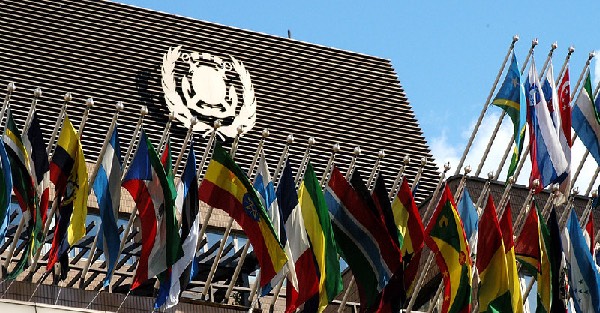It is scorching out there. High-temperature records are being broken daily. Oceans off some shores are as hot as bathwater. What is to blame? The list of culprits and possible culprits includes fossil fuel emissions, natural climate change, El Nino, changes in the Gulf Stream, the decline in Arctic Sea ice, the so-called Azores High pressure system and one contributing factor that will be familiar to those in ocean shipping: the IMO 2020 regulation.
The IMO 2020 regulation has significantly lowered harmful sulfur oxide (SOx) emissions, reducing risks of illness and premature deaths, but it has simultaneously cut the volume of sulfate aerosols in the atmosphere, lowering clouds’ reflective effect on sunlight, which multiple studies claim leads to higher temperatures.
How IMO 2020 impacted shipping emissions
The IMO 2020 regulation required all ships to switch from fuel with 3.5% sulfur content known as high sulfur fuel oil (HSFO) to fuel with 0.5% sulfur content known as very low sulfur fuel oil (VLSFO) starting on Jan. 1, 2020. Vessels with exhaust gas scrubbers can continue to burn HSFO.
Shipping successfully transitioned to the IMO 2020 regime. Smaller and medium-size ships switched to VLSFO. Scrubber installations are widespread for larger vessels doing long-haul voyages. Half of larger tankers and bulkers and almost 80% of the largest container ships have scrubbers, according to Clarksons Securities. Open-loop scrubbers discharge sulfur into the seawater; with closed-loop scrubbers, sulfur sludge is disposed of onshore.
Shipping was estimated to produce 13% of the world’s SOx emissions prior to 2020. The regulation has successfully cleared shipping-induced sulfur pollution from the air. A study released by NASA in October 2022 found that ship tracks — the polluted clouds that trail vessels — declined significantly in the year following IMO 2020 implementation.
Concerns raised prior to IMO 2020 implementation
The negative effect of IMO 2020 — higher global temperatures — was widely studied prior to the regulation’s enforcement and has received new attention recently as heat records have been broken.
A 2018 study published in Nature Communications noted that “policymakers face tradeoffs whereby achieving human health benefits may be associated with climate change consequences.”
The authors predicted that IMO 2020 “will reduce sulfate aerosols and provide health benefits to exposed populations [but] sulfate reduction will also directly and indirectly affect atmospheric light scattering and absorption properties, thereby increasing … effects that contribute to climate change.”
Bloomberg cited the Nature Communications study and one of its authors in a 2019 opinion article entitled “Fighting Shipping Pollution is Bad for the Planet.”
A 2015 study published in Ocean Engineering argued that “burning dirty fuels at high seas … gives climate cooling benefits” and “the reduction of SOx and NOx [nitrogen oxide] emissions through IMO legislation will have a net negative effect [on global warming].”
On Friday, the IMO approved ambitious targets for the reduction of shipping’s carbon emissions over the next 30 years. Success is far from assured, however, given the consensus that the transition to net-zero emissions will require a global carbon levy, which is expected to face heavy pushback.
By removing sulfur emissions that have a cooling effect 30 years prior to the planned full removal of carbon emissions that have a warming effect, research implies that shipping’s contribution to global warming could increase in the near term.
Science publication The Lancet commented in 2020, “Ironically, the immediate reduction of SO2 [sulfur dioxide] contributes to global warming if CO2 [carbon dioxide] is not concurrently reduced. In fact, spraying sulfur into the atmosphere has been proposed as a form of geoengineering to cool the planet by scattering solar radiation and thereby reducing the amount of surface heating by shortwave radiation.”
New focus on potential IMO 2020 fallout
Three and a half years after IMO 2020 was implemented, with air and sea temperatures hitting new highs, the potential downside of the regulation is starting to get more attention.
The New York Times said in a front-page story on Friday that some researchers suggest “recent efforts to clean up sulfur pollution from ships around the world may be pushing up temperatures slightly. That precise impact is still being debated.”
Science publication Carbon Brief addressed the issue in an analysis published July 3. “The effects of lower SO2 emissions on the climate are not instantaneous, as it takes some time for the Earth system to respond to a change in forcing [radiative forcing, which has a cooling effect],” it said.
Assuming global sulfur emissions have been reduced by 10% by IMO 2020, Carbon Brief estimated that “the additional warming … is approximately equivalent to two additional years of global greenhouse gas emissions from human activity at their current rate. While this does not fundamentally change where the world is headed in terms of warming by 2050, it does make it more difficult to limit warming to 1.5 degrees Celsius over the next few decades.”
Source: Freight Waves









































